There is something magical about taking a woodland walk, especially in spring. It's the time to rediscover the native treasures of our landscape.
Late March sees Western bleeding heart pushing up through the leaf litter in my own woodland, increasing in number each year despite our rambunctious dog scampering over them. The plants form a carpet of soft fern-like foliage wherever dappled light pierces the canopy; they thrive in the fertile, moisture-retentive soil of the forest floor. Even without the delicate pink flowers, these perennials would be worthy of inclusion in a shady garden.
Don't be fooled by appearances, by the way — these are much tougher than they look.
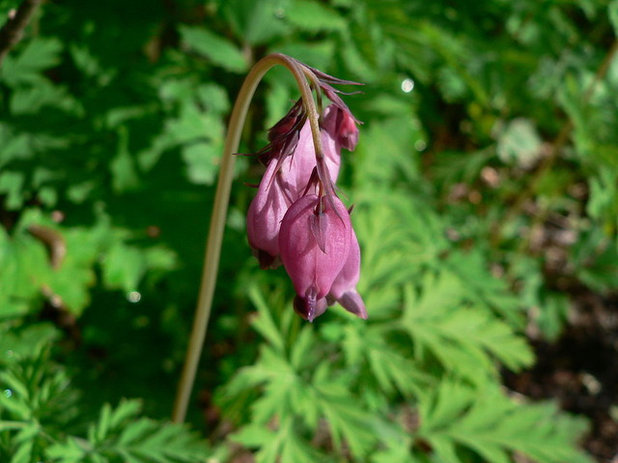 Botanical name: Dicentra formosaCommon names:
Botanical name: Dicentra formosaCommon names: Western bleeding heart, Pacific bleeding heart
USDA zones: 4 to 8 (find your zone)
Origin: Native to moist woodlands of the Pacific Northwest, from British Columbia to California
Water requirement: Prefers moist, fertile soil but is surprisingly drought tolerant in summer months
Light requirement: Dappled light; morning sun with afternoon shade
Mature size: 12 inches tall and wide (although it does spread)
Benefits and tolerances: Hummingbirds love it but deer leave it alone (two excellent reasons to include it in your garden).
Seasonal interest: Flowers in late spring
When to plant: As the foliage begins to go dormant in late summer or when new shoots begin to appear in early spring
Photo by Walter Siegmund
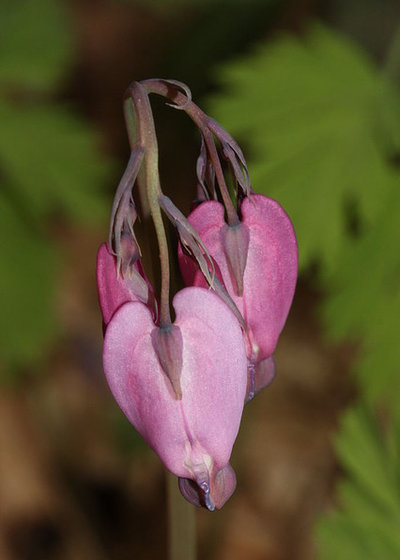 Distinguishing traits.
Distinguishing traits. Delicate blue-green ferny foliage forms a soft carpet beneath the arching stems of dusky-pink heart-shaped flowers.
Despite appearances, this native bleeding heart is tough.
Photo by Walter Siegmund
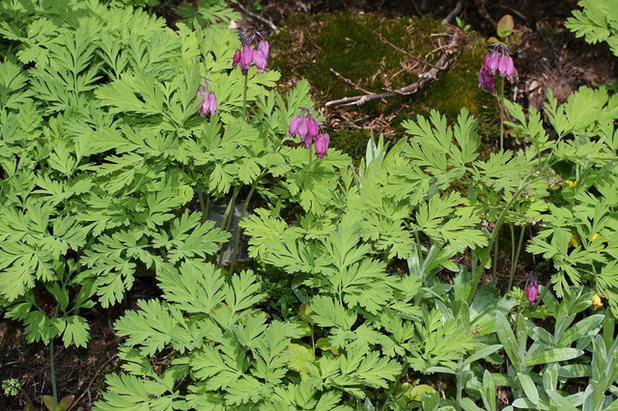 Photo by Walter Siegmund
Photo by Walter Siegmund
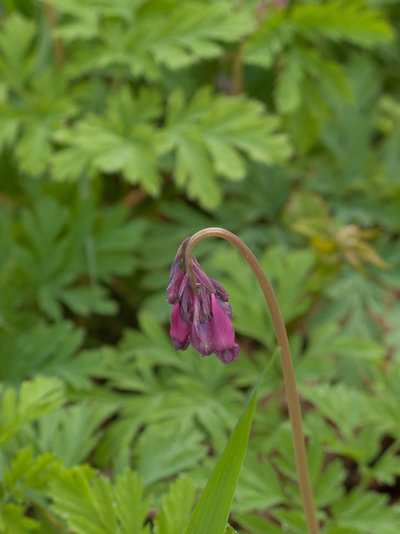
Le jardinet
How to use it. Western bleeding heart
is perfect for the dappled shade of a woodland garden, perhaps clustered around the base of a mossy tree stump or boulder. Or plant it en masse to form a ground cover.
This spring perennial also looks right at home along shady stream banks, providing the soil does not become saturated.
Planting notes. Western bleeding heart spreads easily by rhizomes and seeds, so you can set plants some distance apart and quickly get good coverage. To propagate, divide the plants in early spring as the shoots emerge but before flowering.
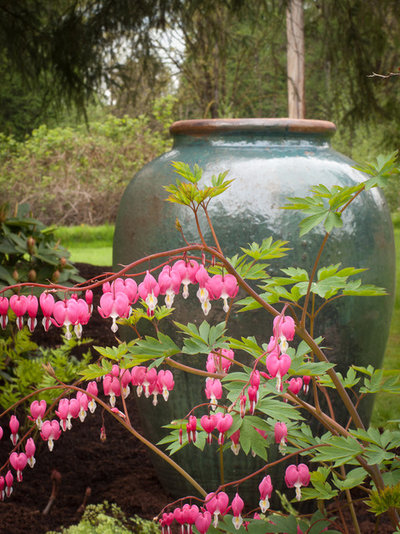
Le jardinet
Ornamental species and cultivars. The most popular of these is
Dicentra spectabilis, shown here. It is a larger perennial, growing to 3 feet by 3 feet, and its flowers are a bright pink.
There is also a white-flowered cultivar (
D. spectabilis 'Alba') and a golden-leaved one with pink flowers called 'Gold Heart' (
D. spectabilis 'Gold Heart').





